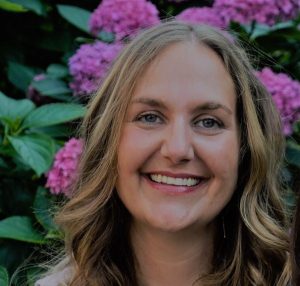AHS February Blog: Flipping the Classroom in AEE

The Department of Agricultural and Human Sciences publishes a monthly blog written by students, alumni and faculty sharing important topics and helpful resources related to the fields of agricultural, extension and human science. In the February blog post, AEE doctoral student Jodi Riedel, discusses how she flipped her classroom to benefit both her teaching style and her students ability to learn more efficiently.
As a new instructor to the university I have found out that I have a problem… I don’t have enough time for instruction. I teach courses in the Agriculture Institute and in Horticultural Sciences. I am also a doctoral student, who spent the last 19 years as a high school agricultural education teacher. With nearly two decades instructing students for 90-minute periods over 18 weeks I had trouble getting everything covered, but 90 hours with students dwarfs the time I have with my university students. What is a veteran teacher to do? Flip the classroom, of course.

This past semester, I expected students to read and work ahead in my classroom but I wanted to add something more (as the students requested). Now, I have moved onto recording the lecture component of the course on Panopto and save my precious 50-minutes of instruction for engaging activities that reiterate the content presented in my recorded lecture. It is a few more steps, but I am loving it and my students seem to be, as well.
With a flipped classroom, students realize that they need to watch the lecture before class or they will be a “deer in headlights,” during class. Students need to have read and participated in the recorded lecture to be able to utilize their new content knowledge. Just today, I was introducing students to various stations (complete with live plant specimens) that further investigated leaf anatomy and morphology. The students who had read and listened to the lecture were rockin’ and rollin’. Under prepared students were not confident and felt that I was speaking in another language due to the vocabulary that I was using. The recorded lecture is a time for me to cover the wealth of vocabulary and give real world examples or share stories. Class time is when we are discovering and practicing through well-crafted and engaging activities.
As an instructor, I need to spend some additional time putting together a pretty flashy presentation but by recording the presentation I can make mistakes and edit. I love the editing piece. I can add components and links or cut out that embarrassing part where I recognized I had a black bean stuck in my front teeth. As a live lecturer, you don’t have that luxury and you are also at the mercy of whatever might happen in the classroom environment. As an adult with ADHD, I can lose my train of thought or forget my trajectory as I introduce that ever-so applicable story that ultimately ends with, “ and I digress. Where was I?” That doesn’t happen anymore with my recorded lecture. Now I am a laser of information and ready for the next time where we get to have fun learning and practicing together.
As instructors, we are aware that one of the lowest forms of learning is through traditional lecture. During my study this past semester with the incredible professor, Dr. Joy Morgan, we further explored this and practiced instructing today’s students while employing an arsenal of methods aside from lecture. I would encourage you all to take a look at a means outside of direct instruction and consider flipping your classroom. Your students will thank you and I am confident they will walk away with deeper knowledge from your course. Believe me, if you want to give a Flipped Classroom a try, your students will flippin’ love it and so will you.
- Categories: